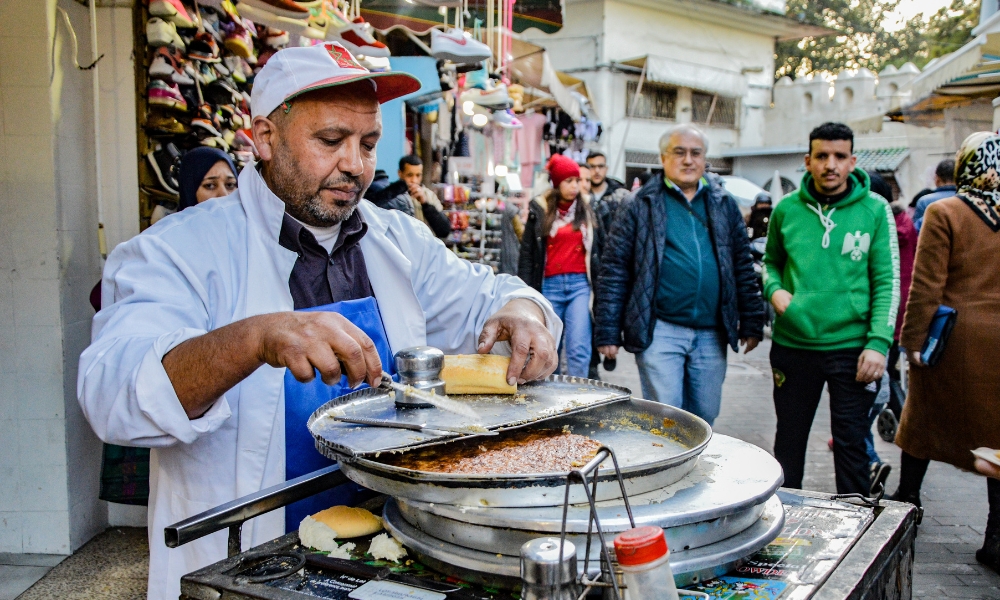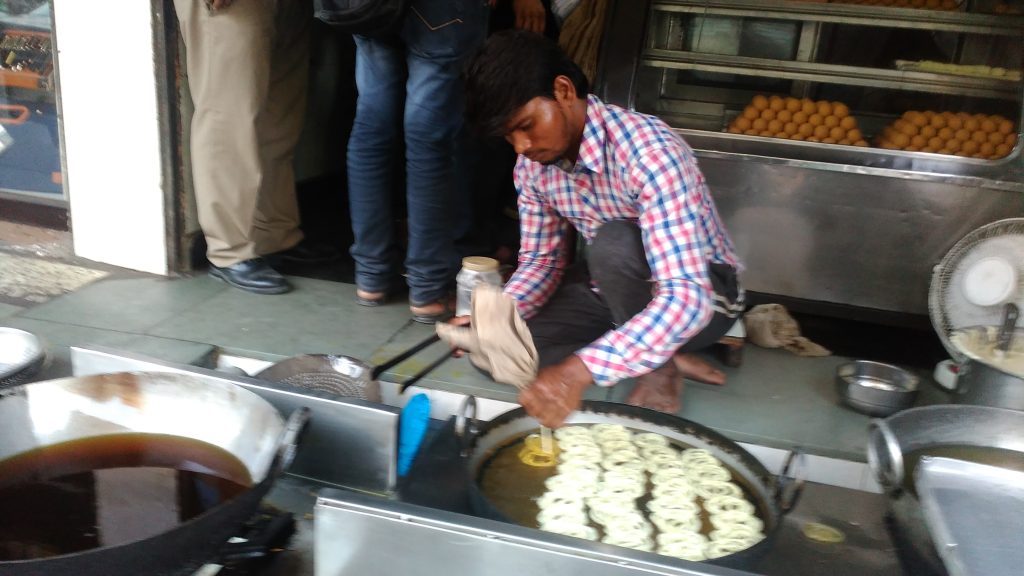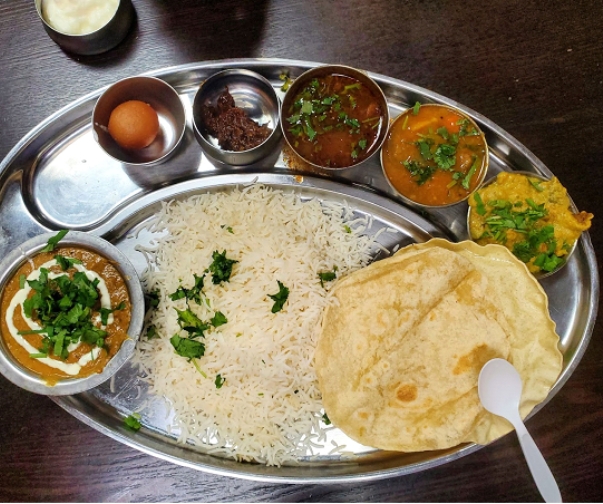Indian cuisine is renowned for its incredible diversity and unparalleled richness. It is a vibrant tapestry woven with many flavours, spices, and cooking techniques, reflecting the country’s diverse regional cultures and traditions.
From the fiery curries of the North to the fragrant rice dishes of the South, Indian cuisine offers a plethora of culinary delights that captivate the senses.
Indian cuisine is characterised by its bold use of spices, aromatic herbs, and intricate flavor combinations. The skillful blending of these ingredients creates a symphony of tastes that is both tantalising and satisfying. Each dish tells a story, conveying centuries of history, cultural influences, and local ingredients.
Importance of understanding regional variations
It is imperative to comprehend the enormous regional variances across the nation to appreciate the depth of Indian cuisine fully.
Due to the sizeable subcontinent’s varied terrain, climatic conditions, and cultural heritage, India has developed several unique culinary traditions.
The North and South regions, in particular, showcase remarkable differences in their approach to food. While the North is known for its robust flavours, generous use of dairy products, and influence from Persian and Arab cuisines, the South embraces a lighter touch, emphasising rice, lentils, and unique spice combinations.
Exploring these regional variations allows us to delve deeper into the nuances of Indian cuisine and understand the fascinating stories behind each dish.
In this article, we will journey through the diverse landscapes of Indian cuisine, beginning by examining the differences between North and South Indian cuisine and exploring the distinctive spices, herbs, and ingredients that shape their flavours. We will uncover the historical influences that have shaped these culinary traditions and highlight iconic dishes from each region.
North vs. South: Contrasting Flavours and Influences
Spices, herbs and flavour profiles:
North Indian cuisine is known for its rich and robust flavours, often achieved through aromatic spices such as cumin, coriander, cardamom, and cloves. The cuisine encompasses a wide range of dishes with varying levels of spiciness.
In contrast, South Indian cuisine tends to be spicier, focusing on flavors derived from mustard seeds, curry leaves, tamarind, and red chillies. The flavours are vibrant, tangy, and accompanied by a hint of sourness.
Use of dairy products and meats:
North Indian cuisine incorporates a generous use of dairy products like ghee (clarified butter), milk, yoghurt, and paneer (Indian cottage cheese). Meat, particularly mutton, and chicken, is commonly consumed in the North, with dishes like butter chicken and kebabs being prominent examples.
In South Indian cuisine, the emphasis is more on vegetarian portions, where they greatly rely on plant-based proteins such as lentils, pulses, and legumes. However, seafood, especially fish, holds a significant place in the coastal regions of South India.
The dominance of wheat in the North and rice in the South:
Wheat-based products, including various breads like roti, naan, and paratha, are staples in North Indian cuisine. The North is also known for its wide array of savoury snacks made from wheat flour.
In contrast, rice is the staple grain in South Indian cuisine, and it forms the foundation of many dishes such as dosas, idlis, and biryanis. South Indian cuisine showcases diverse rice-based dishes, reflecting the region’s agricultural abundance.
Historical Influences on North Indian Cuisine
History has had a remarkable influence on North Indian cuisine which reflects Persian and Arab influences.The Mughal Empire, which ruled a significant part of North India, introduced Persian cooking techniques, spices, and ingredients. This influence is evident in the rich, aromatic gravies, use of saffron, and dried fruits and nuts in dishes like biryanis and kormas.
Prominent dishes derived from the North:
North Indian cuisine boasts iconic dishes that have gained popularity worldwide. Examples include butter chicken (murgh makhani), tandoori chicken, seekh kebabs, dal makhani, and various types of biryanis. These dishes reflect the culinary heritage and royal influences that have shaped North Indian cuisine.
Historical Influences on South Indian Cuisine
Emphasis on lentils and rice:
South Indian cuisine has deep roots in the Dravidian culture, which dates back thousands of years. Lentils (such as toor dal, urad dal, and moong dal) play a central role in South Indian cuisine, contributing to the protein content of meals. Rice, grown abundantly in the region, is a staple and forms the basis of most meals.
Prominent dishes derived from the South:
South Indian cuisine is renowned for its distinctive dishes. Idli (steamed rice cakes), dosa (fermented rice and lentil crepes), sambar (spiced lentil soup), rasam (tangy soup), and coconut-based curries like avail and coconut chutney are some examples. These dishes showcase the flavours and ingredients specific to South India, highlighting the region’s culinary heritage.
Understanding the contrasting flavours and influences between North Indian and South Indian cuisine provides insight into the diversity of Indian food and the cultural richness of different regions.
Vegetarian vs. Non-Vegetarian Foods in India
Cultural and Religious Factors contribute to the popularity of vegetarian dishes in India
India has a rich heritage of vegetarianism influenced by cultural and religious practices. Hinduism, the dominant religion in India, promotes vegetarianism to practice compassion and non-violence towards animals. Most Hindus follow a vegetarian diet as a religious observance. Other religions, such as Jainism and Buddhism, also advocate for vegetarianism.
Iconic Vegetarian Dishes:
Indian cuisine offers many iconic vegetarian dishes that have gained global recognition. Some famous examples include:
⦁ Dal (lentil) dishes: Dal is a staple in Indian households, and various lentil preparations like Dal Makhani, Dal Tadka, and Sambar are widely enjoyed.
⦁ Vegetable curries: Aloo Gobi (potato and cauliflower curry), Palak Paneer (spinach and cottage cheese curry), and Baingan Bharta (roasted eggplant curry) are cherished vegetarian dishes.
⦁ Paneer dishes: Paneer, a type of Indian cottage cheese, is used in dishes like Paneer Tikka, Paneer Butter Masala, and Shahi Paneer, which are loved by vegetarians and non-vegetarians alike.
⦁ Biryani and Pulao: Vegetarian versions of these aromatic rice dishes, such as Vegetable Biryani and Vegetable Pulao, are flavorful and widely relished.
⦁ Dosas and Idlis: South Indian cuisine offers popular vegetarian breakfast options like Masala Dosa, and Steamed Idlis served with chutneys and sambar.
Significance of Meat Dishes in Indian Cuisine
Regional Variations in Meat Consumption:
While vegetarianism holds prominence in India, there are regional variations in meat consumption. In certain parts of India, especially in the North and coastal regions, meat dishes are more prevalent due to cultural practices, historical influences, and geographical factors. For example:
North Indian cuisine:
Meat dishes like Butter Chicken, Rogan Josh, and Seekh Kebabs are well-known and appreciated. The Mughal influence in North India contributed to the development rich and flavorful meat-based dishes.
Coastal Cuisine:
Coastal regions like Kerala and Goa have a strong seafood tradition. Fish, prawns, and crab are commonly used in dishes like Meen Curry (fish curry), Prawn Biryani, and Goan Fish Curry.
Prominent Non-Vegetarian Dishes:
Indian cuisine boasts a variety of non-vegetarian dishes that showcase diverse flavors and cooking techniques. Some notable examples include:
Tandoori Chicken:
Marinated in yoghurt and spices, this grilled chicken dish is synonymous with Indian cuisine and is enjoyed worldwide.
Chicken Tikka Masala:
Tender chicken cooked in a creamy tomato-based sauce is a popular choice in Indian restaurants globally.
Hyderabadi Biryani:
Aromatic rice layered with succulent meat, such as chicken or goat, and a blend of spices, this dish exemplifies the richness of Indian cuisine.
Butter Naan and Butter Chicken:
This iconic combination features soft, buttery naan bread with creamy, mildly spiced tomato-based chicken curry.
Bengali Fish Curry:
Hilsa fish or other varieties are cooked in a flavourful gravy made with mustard, turmeric, and other spices, reflecting the unique flavours of Bengal.
Vegetarian dishes are popular in India due to cultural and religious factors, with millions enjoying many iconic vegetarian dishes. However, meat dishes also play a significant role in Indian cuisine, with regional variations in meat consumption and a range of prominent non-vegetarian dishes reflecting the country’s diverse flavours and culinary traditions.
Indian Cuisine – emerging trends and innovation
Indian cuisine is constantly evolving and adapting to changing times. The future holds exciting possibilities regarding emerging trends and innovative approaches to Indian food. Some of the trends that are expected to shape the future of Indian cuisine include:
Regional Diversity:
The exploration and celebration of regional Indian cuisines will continue to grow. As people become more interested in authentic and diverse flavours, lesser-known regional dishes will gain popularity. This trend will highlight the richness and variety of Indian culinary traditions.
Modern Indian Fusion:
Fusion cuisine, blending Indian flavours with other global cuisines, will continue to thrive. Chefs and food enthusiasts will experiment with new combinations, creating innovative dishes with a unique twist to traditional Indian recipes. This fusion movement will contribute to the globalisation of Indian food.
Healthy and Plant-Based Options:
With an increasing focus on wellness, there will be a rise in demand for healthier and plant-based Indian dishes. Chefs and home cooks will explore creative ways to incorporate more vegetables, whole grains, and plant-based proteins into traditional recipes without compromising taste.
Popularity of street foods


Busy people and travellers often rely on the convenience of Indian snack foods sold by vendors on the streets. The quick-bite foods enable them to satisfy their cravings and fuel their journeys. Some of the famous street snacks that can be found across India include:
⦁ Samosa
⦁ Pani Puri/Gol Gappa
⦁ Vada Pav
⦁ Bhel Puri
⦁ Aloo Tikki
⦁ Jalebi
⦁ Pav Bhaji
⦁ Dosa
⦁ Chole Bhature
⦁ Kachori
These are just a few examples of the multitude of street snack foods that can be found in India. Each region and city has its specialties, showcasing the diverse culinary traditions that make Indian street food so distinctive and appetising. Exploring these street snacks allows the traveller to experience the vibrant flavours, textures, and aromas that are integral to Indian cuisine.
Influence of Globalisation and fusion cuisine
Globalisation has significantly impacted Indian cuisine, leading to the popularity of Indian food worldwide. As Indian communities expand and interact with different cultures, the influence of globalisation on Indian cuisine will continue to be significant. Critical aspects influenced by globalisation include:
Culinary Exchange:
Indian chefs and culinary experts are collaborating with international chefs, exchanging techniques, and incorporating global ingredients into Indian recipes. This cross-pollination of culinary ideas will result in new and exciting flavours.
Fusion of Flavours:
Global fusion cuisine will continue to merge with traditional Indian cooking, creating innovative dishes that combine the best of both worlds. This fusion will introduce new ingredients and cooking methods, resulting in unique culinary experiences.
Adaptation to Local Tastes:
Indian restaurants in different parts of the world often adapt their dishes to cater to local palates while maintaining the essence of Indian flavours. This adaptation will create localised Indian dishes that blend traditional Indian techniques with local ingredients.
Predictions for the Future of Indian Food
The future of Indian food looks promising and full of opportunities. Here are some predictions for the future of Indian cuisine:
Rise of Street Food Culture:
Indian street food will continue to captivate people’s taste buds worldwide. The popularity of Indian street snacks, such as samosas, chaat, and vada pav, is likely to increase, and these flavours will be incorporated into fine dining and casual restaurant settings.
Technological Advancements:
Technology will play a vital role in shaping the future of Indian cuisine. From online platforms for sharing recipes and techniques to advanced cooking equipment, technology will enhance the accessibility and innovation of Indian cooking.
Sustainability and Conscious Eating:
With a growing awareness of environmental impact and sustainability, there will be a greater emphasis on locally sourced ingredients, reducing food waste, and promoting conscious eating practices within Indian cuisine.
Preservation of Culinary Heritage:
Efforts to preserve traditional culinary techniques, recipes, and ingredients will continue to gain momentum as chefs and food enthusiasts work together to document and safeguard the culinary heritage of various Indian regions.
The future of Indian cuisine combines a blend of tradition, innovation, and global influence. With emerging trends, fusion experiments, and an increased focus on health and sustainability, Indian food will continue to captivate food lovers worldwide. The evolving landscape of Indian cuisine promises exciting culinary experiences for traditionalists and those seeking new flavour
In conclusion, Indian cuisine is a vibrant tapestry of flavours, aromas, and textures that reflect the country’s rich cultural heritage. By celebrating the diversity of Indian foods, we acknowledge the beauty and complexity of the amalgamation of various regional traditions.







